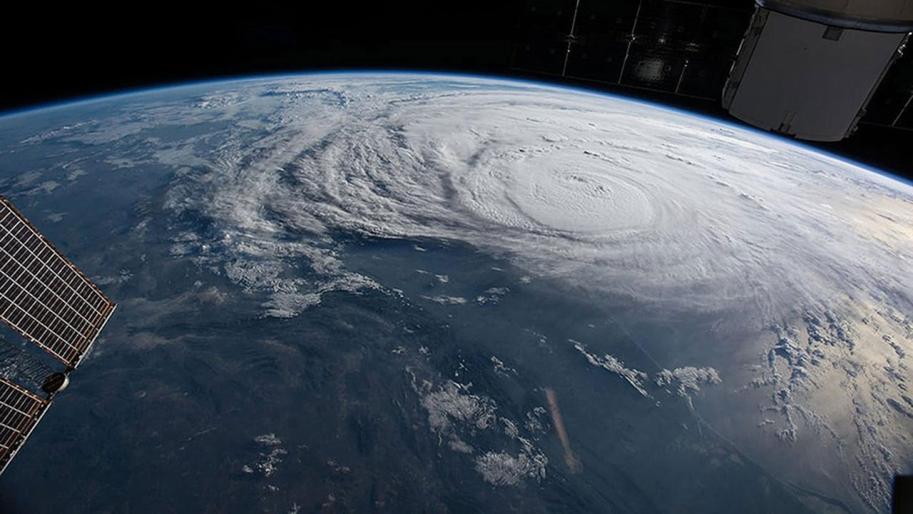How Can I Use Space Weather Data to Improve My Business Operations?
Space weather is a term used to describe the conditions in the Earth's space environment, including the sun, the solar wind, and the Earth's magnetic field. Space weather can have a significant impact on Earth's systems, including communications, navigation, power grids, and transportation. As a result, space weather data is becoming increasingly important for businesses that rely on these systems.

Types Of Space Weather Data
There are a variety of different types of space weather data that can be used to improve business operations. These include:
- Solar flares and coronal mass ejections (CMEs): These are large eruptions of energy from the sun that can cause geomagnetic storms and solar radiation storms.
- Geomagnetic storms and solar radiation storms: These are disturbances in the Earth's magnetic field and solar radiation levels that can disrupt communications, navigation, and power grids.
- Ionospheric disturbances and radio blackouts: These are changes in the Earth's ionosphere that can cause radio blackouts and disrupt satellite communications.
- Space debris and near-Earth objects (NEOs): These are objects in space that can pose a risk to satellites and spacecraft.
How Space Weather Data Can Improve Business Operations
Space weather data can be used to improve business operations in a number of ways, including:
- Enhance communication and navigation systems: Space weather data can be used to predict and mitigate the effects of space weather events on communication and navigation systems.
- Protect critical infrastructure from space weather events: Space weather data can be used to identify and protect critical infrastructure from the effects of space weather events.
- Improve energy production and distribution: Space weather data can be used to optimize energy production and distribution by predicting the effects of space weather events on power grids.
- Optimize transportation and logistics operations: Space weather data can be used to optimize transportation and logistics operations by predicting the effects of space weather events on transportation systems.
- Mitigate risks associated with space weather events: Space weather data can be used to mitigate the risks associated with space weather events by developing and implementing space weather-related policies and procedures.
Sources Of Space Weather Data
There are a number of different sources of space weather data, including:
- Government agencies: Government agencies such as the National Oceanic and Atmospheric Administration (NOAA), the National Aeronautics and Space Administration (NASA), and the European Space Agency (ESA) provide space weather data and forecasts.
- Commercial space weather providers: There are a number of commercial space weather providers that provide space weather data and forecasts to businesses and other organizations.
- Academic institutions and research organizations: Academic institutions and research organizations also provide space weather data and forecasts.
- Open-source data repositories: There are a number of open-source data repositories that provide space weather data and forecasts.
How To Access And Use Space Weather Data

To access and use space weather data, you will need to:
- Identify the relevant space weather data for your business: The first step is to identify the space weather data that is relevant to your business. This will depend on the type of business you operate and the systems that you rely on.
- Choose the appropriate data format and delivery method: Once you have identified the relevant space weather data, you will need to choose the appropriate data format and delivery method. There are a variety of different data formats and delivery methods available, so you will need to choose the ones that are most appropriate for your business.
- Integrate space weather data into your existing business systems: Once you have chosen the appropriate data format and delivery method, you will need to integrate space weather data into your existing business systems. This may involve developing new software or modifying existing software.
- Develop and implement space weather-related policies and procedures: Once you have integrated space weather data into your existing business systems, you will need to develop and implement space weather-related policies and procedures. These policies and procedures should be designed to protect your business from the effects of space weather events.
Case Studies
There are a number of businesses that have successfully used space weather data to improve their operations. For example:
- AT&T: AT&T uses space weather data to predict and mitigate the effects of space weather events on its communication networks.
- Boeing: Boeing uses space weather data to protect its satellites from the effects of space weather events.
- Con Edison: Con Edison uses space weather data to predict and mitigate the effects of space weather events on its power grid.
Space weather data can be a valuable tool for businesses that rely on systems that are affected by space weather. By accessing and using space weather data, businesses can improve their operations and mitigate the risks associated with space weather events.
If you are a business that relies on systems that are affected by space weather, I encourage you to consider using space weather data to improve your operations. There are a number of resources available to help you get started, including government agencies, commercial space weather providers, and academic institutions and research organizations.
YesNo

Leave a Reply